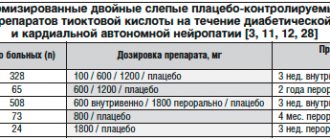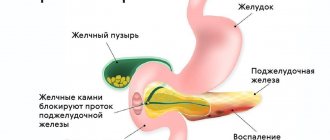Levofloxacin 5 mg/ml 100 ml solution for inf.
Instructions for medical use of the drug (Insert leaflet) Trade name Levofloxacin International nonproprietary name Levofloxacin Dosage form, dosage Solution for infusion, 2 mg/ml, 3 mg/ml, 5 mg/ml Pharmacotherapeutic group Anti-infective drugs for systemic use. Antibacterial drugs for systemic use. Antimicrobial drugs are quinolone derivatives. Fluoroquinolones. Levofloxacin. ATC code J01MA12 INDICATIONS FOR USE ADULT PATIENTS FOR TREATMENT OF THE FOLLOWING INFECTIONS: - COMMUNITY-ACQUIRED PNEUMONIA - SKIN AND SOFT TISSUE INFECTIONS FOR THE ABOVE INFECTIONS LEVOFLOXACIN SHOULD BE USED ONLY IN THOSE WITH IN CASES WHEN THE IMPOSSIBILITY OF USE OF ANTIBACTERIAL MEDICINES WHICH ARE USUALLY RECOMMENDED AS INITIAL THERAPY FOR THESE INFECTIONS IS JUSTIFIED. — PYELONEPHRITIS AND COMPLICATED URINARY TRACT INFECTIONS — CHRONIC BACTERIAL PROSTATITIS — PULMONARY FORM OF ANTHRAX: POST-EXPOSURE PREVENTION AND TREATMENT. — OFFICIAL GUIDELINES FOR THE APPROPRIATE USE OF ANTIBACTERIALS SHOULD BE FOLLOWED. LIST OF INFORMATION REQUIRED BEFORE USING CONTRAINDICATIONS - HYPERSENSITIVITY TO LEVOFLOXACIN (INCLUDING OTHER DRUGS OF THE QUINOLONE GROUP) - TAKEN CLASS IA ANTIARRHYTHMIC DRUGS (QUINIDINE, PROCAINAMIDE) OR CLASS III SSA (AMIODARONE, SOTALOL) - LONGER QT INTERVAL - HYPOKALEMIA - TENDON DAMAGE OBSERVED DURING PREVIOUS USE OF FLUOROQUINOLONES - EPILEPSY - GLUCOSE-6-PHOSPHATE DEHYDROGENASE DEFICIENCY - PREGNANCY, LACTATION - CHILDHOOD AND ADOLESCENCE UNDER 18 YEARS - TREATMENT OF INFECTIONS THAT ARE NOT ARE SEVERE AND MAY PASS UP WITHOUT ANTIBACTERIAL THERAPY (E.G. OROPHARYNX INFECTIONS) - TREATMENT NON-BACTERIAL INFECTIONS, E.G. NON-BACTERIAL (CHRONIC) PROSTATITIS - PREVENTING TRAVELER'S DIARRHEA OR REPEATED LOWER URINARY TRACT INFECTIONS (INFECTIONS THAT DO NOT SPREAD BEYOND THE BLADDER) - LE FOR MODERATE BACTERIAL INFECTIONS, WHEN OTHER USUALLY RECOMMENDED ANTIBACTERIAL MEDICATIONS CANNOT BE USED, NECESSARY MEASURES CANNOT BE USED PRECAUTIONS FOR USE FLUOROQUINOLONE ANTIBIOTICS SHOULD BE USED WITH EXTREME CAUTION, ESPECIALLY IN ELDERLY PEOPLE, PATIENTS WITH KIDNEY DISEASE; PATIENTS RECEIVING SYSTEMIC CORTICOSTEROID THERAPY; PATIENTS AFTER ORGAN TRANSPLANTATION. THESE PATIENTS HAVE AN INCREASED RISK OF TENDON INJURY THAT MAY RESULT FROM TREATMENT WITH FLUOROQUINOLONE AND QUINOLONE ANTIBIOTICS. INTERACTIONS WITH OTHER DRUGS THE PHARMACOKINETICS OF LEVOFLOXACIN DOES NOT CHANGE TO A CLINICALLY SIGNIFICANT EXTENT WHEN COMMON APPLICATION WITH THE DRUGS: CALCIUM CARBONATE, DIGOXIN, GLIBENCLAMIDE, RANITIDINE. SIMULTANEOUS USE OF QUINOLONES WITH THEOPHYLLINE, FENBUFEN, NON-STEROID ANTI-INFLAMMATORY DRUGS (NSAIDS) AND OTHER DRUGS THAT REDUCED THE SEIZURE THRESHOLD MAY RESULT IN A SIGNIFICANT REDUCTION IN THE CEREBRAL SEIZURE THRESHOLD, DESPITE THE LACK OF PHARMACOKINETIC INTERACTIONS OF LEVOFLOXACIN WITH THEOPHYLLINE. IN THE PRESENCE OF FENBUFEN, THE CONCENTRATION OF LEVOFLOXACIN INCREASES BY ALMOST 13%. PROBENECID AND CIMETIDINE HAVE A SIGNIFICANT INFLUENCE ON THE ELIMINATION OF LEVOFLOXACIN AND REDUCE THE RENAL CLEARANCE OF LEVOFLOXACIN (BY 24% AND 34%, RESPECTIVELY), SINCE BOTH DRUGS CAN BLOCK THE DUAL SECRETION OF LEVOFLOXACIN SACINA IN THE KIDNEYS. WITH SIMULTANEOUS APPLICATION OF MEDICINES AFFECTING RENAL TUBAL SECRETION, TREATMENT WITH LEVOFLOXACIN SHOULD BE CARRIED OUT WITH CAUTION, ESPECIALLY IN IMPAIRMENTS OF RENAL FUNCTION. THE HALF-LIFE OF CYCLOSPORINE INCREASES BY 33% WHEN APPLIED WITH LEVOFLOXACIN. TREATMENT WITH LEVOFLOXACIN IN COMBINATION WITH A VITAMIN K ANTAGONIST (E.G. WARFARIN) MAY RESULT IN AN INCREASE IN COAGULATION TEST PERFORMANCE (PROTHROMBIN TIME (PT) ACCORDING TO INTERNATIONAL NORMALIZED RATIO ( INR) AND/OR INCREASED BLEEDING, WHICH CAN BE SERIOUS. THOSE RECEIVING VITAMIN K ANTAGONISTS REQUIRE MONITORING OF COAGULATION TESTS MEDICINES CAPABLE OF PROLONGING THE QT INTERVAL (E.G. CLASS IA AND III ANTI-ARHYTHMICS, TRICYCLIC ANTIDEPRESSANTS, MACROLE IDEAS) SHOULD BE USED WITH CAUTION WHEN USE WITH LEVOFLOXACIN SPECIAL WARNINGS (SPECIAL INSTRUCTIONS) AT THE GREATEST IN SEVERE CASES OF PNEUMOCOCCAL PNEUMONIA, LEVOFLOXACIN MAY NOT BE THE MOST OPTIMAL THERAPY.There is a high likelihood that METHICILLIN-RESISTANT STAPHYLOCOCCUS AURUS WILL ALSO BE RESISTANT TO FLUOROQUINOLONES, INCLUDING LEVO FLOXACIN THEREFORE, LEVOFLOXACIN IS NOT RECOMMENDED FOR USE IN THE TREATMENT OF INFECTIONS CAUSED BY METHICILLIN-RESISTANT STAPHYLOCOCOCUS OR SUCH SUSPECTIONS EXIST IF THE RESULTS OF LABORATORY TESTS HAVE NOT CONFIRMED THE SENSITIVITY OF THE MICROORGANISM TO LEVOFLOXACIN (AND ALSO IF THE USE OF ANTIBACTERIAL DRUGS USUALLY PRESCRIBED IN THE TREATMENT OF INFECTIONS CAUSED BY METHICYL LIN-RESISTANT STAPHYLOCOCCUS IS CONSIDERED IMPOSSIBLE). RESISTANCE TO FLUOROQUINOLONES BY E. COLI, THE MOST COMMON PATHOGENE CAUSING URINARY TRACT INFECTIONS, VARIES AMONG THE EUROPEAN UNION. WHEN PRESCRIBING DRUGS, IT IS RECOMMENDED TO CONSIDER THE LOCAL PREVALENCE OF E. COLI RESISTANCE TO FLUOROQUINOLONES. PULMONARY ANTHRAX: USE IS BASED ON BACILLUS ANTHRACIS SENSITIVITY DATA AND PRE-CLINICAL STUDIES, ALSO WITH LIMITED AMOUNTS OF CLINICAL DATA. TREATING PHYSICIANS SHOULD REFER TO HARMONIZED NATIONAL AND/OR INTERNATIONAL DOCUMENTS REGARDING THE TREATMENT OF ANTHRAX. THE RECOMMENDED INFUSION DURATION SHOULD BE FOLLOWED, WHICH IS NOT LESS THAN 30 MINUTES FOR 250 MG (50 ML INFUSION SOLUTION) AND NOT LESS THAN 60 MINUTES FOR 500 MG (100 ML SOLUTION). DURING OFLOXACIN INFUSION, TACHYCARDIA AND A TEMPORARY REDUCTION IN BLOOD PRESSURE MAY DEVELOP. IN RARE CASES, ACUTE VASCULAR INSUFFICIENCY (CIRCULAR COLLAPSE) IS POSSIBLE AS A RESULT OF A SHARP REDUCTION IN BLOOD PRESSURE. IF THERE IS SIGNS OF A LOSS IN BLOOD PRESSURE DURING LEVOFLOXACIN (L-ISOMER OF OFLOXACIN) INFUSION, THE INFUSION SHOULD BE DISCONTINUED IMMEDIATELY. SODIUM CONTENT THIS MEDICATION CONTAINS 7.7 mmol (177 MG) SODIUM PER 50 ML DOSE AND 15.39 mmol (354 MG) PER 100 ML DOSE. MUST BE TAKEN INTO ATTENTION IN PATIENTS ON A CONTROLLED SODIUM DIET. IN RARE CASES, TENDINITIS IS POSSIBLE, MOST OFTEN IN THE ACHILLES TENDON, WHICH CAN LEAD TO ITS RUPTURE. THE RISK OF DEVELOPING TENDINITIS AND TENDON RUPTURE IS INCREASED IN OLDER AGE AND IN PATIENTS USING CORTICOSTEROID DRUGS. IF TENDINITIS IS SUSPECTED, TREATMENT WITH LEVOFLOXACIN SHOULD BE IMMEDIATELY DISCONTINUED AND APPROPRIATE TREATMENT OF THE AFFECTED TENDON (E.G. IMMOBILIZATION) SHOULD BE INITIATED TO REST. EPIDEMIOLOGICAL STUDIES HAVE REPORTED AN INCREASED RISK OF ANEURYSMS AND AORTIC DISTRIBUTION AFTER FLUOROQUINOLONE USE, ESPECIALLY IN ELDERLY PATIENTS. IN PATIENTS WITH A HISTORY OF AN ANEURYSM, OR HAVING AN AURYSM AND/OR AORTIC DISSELATION, AS WELL AS OTHER RISK FACTORS OR CONDITIONS PREDISPOSIBLE TO THE DEVELOPMENT OF ANEURYSMS AND AORTIC DISSELATION (E.G., MARFAN'S SYNDROME, EHLER'S SYNDROME SA-DANLO VASCULAR TYPE, TAKAYASU ARTERITIS, GIANT CELL ARTERITIS, BEHÇET'S DISEASE, ARTERIAL HYPERTENSION, ATHEROSCLEROSIS), FLUOROQUINOLONES SHOULD BE USED ONLY AFTER A CAREFUL BENEFITS-RISK EVALUATION AND CONSIDERATION OF OTHER POSSIBLE THERAPY OPTIONS. IN THE EVENT OF SUDDEN ABDOMINAL, CHEST OR BACK PAIN, PATIENTS SHOULD CONTACT A DOCTOR IMMEDIATELY AT THE EMERGENCY DEPARTMENT. PSEUDOMEMBRANOSUS COLITIS IF PSEUDOMEMBRANOSUS COLITIS IS SUSPECTED, LEVOFLOXACIN SHOULD BE DISCONTINUED IMMEDIATELY AND APPROPRIATE TREATMENT INITIATED. IN SUCH CASES, MEDICINES THAT INHIBIT INTESTINE MOTORS SHOULD NOT BE USED. PRESPOSIBILITY TO SEIZURES LEVOFLOXACIN IS CONTRAINDICATED IN PATIENTS WITH A HISTORY OF EPILEPSY. AS WITH OTHER QUINOLONES, CAUTION SHOULD BE EXERCISED IN PATIENTS PROPOSED TO EPILEPTIC SEIZURES, FOR EXAMPLE, PATIENTS WITH EXISTING CENTRAL NERVOUS SYSTEM LESIONS, WHILE TREATING WITH FENBUFEN AND THE SIMILAR AT THE SAME TIME AND, NON-STEROID ANTI-INFLAMMATORY DRUGS OR DRUGS THAT LOWER THE CEREBRAL SEIZURE THRESHOLD, SUCH AS THEOPHYLLINE. IN CASE OF CONVULSIVE SEIZURES, TREATMENT WITH LEVOFLOXACIN SHOULD BE DISCONTINUED. PATIENTS WITH GLUCOSO-6-PHOSPHATEDEHYDROGENASE DEFICIENCY PATIENTS WITH LATENT OR MANIFESTING INSUFFICIENT GLUCOSE-6-PHOSPHATEDEHYDROGENASE ACTIVITY MAY BE PRODICED TO HEMOLYTIC REACTIONS DURING TREATMENT WITH QUINOL THEREFORE, CAUTION SHOULD BE USED WHEN USING LEVOFLOXACIN. PATIENTS WITH IMPAIRED RENAL FUNCTION DUE TO THE EXCRETION OF LEVOFLOXACIN PRIMARILY BY THE KIDNEYS, DOSE ADJUSTMENT SHOULD BE CARRIED OUT FOR PATIENTS WITH IMPAIRED RENAL FUNCTION HYPERSENSITIVITY REACTIONS LEVOFLOXACIN MAY CAUSE SERIOUS, POTENTIALLY FATAL HYPERSENSITIVITY REACTIONS, SUCH AS ANGIOEDEMA, BEFORE ANAPHYLACTIC SHOCK, SOMETIMES AFTER FIRST DOSE. PATIENTS SHOULD IMMEDIATELY STOP TREATMENT AND CONTACT THEIR PHYSICIAN OR EMERGENCY DOCTOR WHO WILL TAKE APPROPRIATE EMERGENCY MEASURES. HYPOGLYCEMIA WITH LEVOFLOXACIN, AS WITH ALL QUINOLONES, HYPOGLYCEMIA MAY OCCUR, USUALLY IN PATIENTS WITH DIABETES MELLITUS WHO ARE AT THE SAME TIME TREATED WITH ORAL HYPOGLYCEMIC DRUGS, E.G. GLI BENCLAMIDE OR INSULIN. IN SUCH PATIENTS, STRICT MONITORING OF BLOOD GLUCOSE LEVEL IS RECOMMENDED. PREVENTION OF PHOTOSENSITIZATION ALTHOUGH PHOTOSENSITIZATION IS RARE WITH TREATMENT WITH LEVOFLOXACIN, PATIENTS ARE ADVISED NOT TO UNNECESSARY EXPOSE THEMSELVES TO STRONG SUN LIGHT OR ARTIFICIAL UV RADIATION TECHNIQUES, E.G., SUNLIGHT LAMPS, SOLARIUM, TO AVOID PHOTOSENSITIZATION. PATIENTS UNDER TREATMENT WITH VITAMIN K ANTAGONISTS DUE TO A POSSIBLE INCREASE IN COAGULATION TEST PERFORMANCE (PROTHROMBIN TIME/INR) AND/OR INCREASED BLEEDING IN PATIENTS UNDER TREATMENT WITH LEVOFLOXACIN M IN COMBINATION WITH A VITAMIN K ANTAGONIST (E.G. WARFARIN), CLOTTING INDICATORS SHOULD BE MONITORED BLOOD WHEN USE OF THESE DRUGS AT THE SAME TIME. PSYCHOTIC REACTIONS IN PATIENTS USING QUINOLONES, INCL. LEVOFLOXACIN, PSYCHOTIC REACTIONS HAVE BEEN RECORDED. IN VERY RARE CASES THEY PROGRESS TO SUICIDAL THOUGHTS AND SELF-HARMING BEHAVIOR, SOMETIMES EVEN AFTER ONE SINGLE DOSE OF LEVOFLOXACIN. IN THE CASE OF DEVELOPMENT OF PSYCHOTIC REACTIONS IN A PATIENT, LEVOFLOXACIN SHOULD BE CANCELED AND APPROPRIATE MEASURES TAKEN. CAUTION IS RECOMMENDED WHEN PRESCRIBING LEVOFLOXACIN TO PATIENTS WITH PSYCHOSES OR A HISTORY OF MENTAL ILLNESS. QT INTERVAL PROLONGATION SHOULD BE CAUTION IN PATIENTS WITH KNOWN RISK FACTORS FOR QT INTERVAL PROLONGATION: ELDERLY AGE, ELECTROLYTE DISORDERS (HYPOKALEMIA, HYPOMAGNEMIA), CONGENITAL LONG QT INTERVAL SYNDROME, HEART DISEASES (HEART FAILURE, MYOCARDIAL INFARCTION, BRADYCARDIA), SIMULTANEOUS USE OF MEDICINES CAPABLE OF EXTENDING THE QT INTERVAL. PERIPHERAL NEUROPATHY SENSORY AND SENSOMOTOR PERIPHERAL NEUROPATHY HAVE BEEN RECORDED IN PATIENTS RECEIVED WITH FLUOROQUINOLONES, INCL. LEVOFLOXACIN, AND THEIR DEVELOPMENT WAS RAPID. LEVOFLOXACIN SHOULD BE DISCONTINUED WHEN NEUROPATHY SYMPTOMS APPEAR TO AVOID THE DEVELOPMENT OF AN IRREVERSIBLE CONDITION. OPIATES DETERMINATION OF OPIATES IN URINE MAY GIVE A FALSE POSITIVE RESULT WHEN TREATMENT WITH LEVOFLOXACIN. IT IS NECESSARY TO CONFIRM A POSITIVE RESULT FOR OPIATES BY ANOTHER, MORE SPECIFIC METHOD. LIVER AND BILIARY TRACT DISORDERS CASES OF LIVER NECROSIS, UP TO LIFE-THREATENING LIVER FAILURE, HAVE BEEN RECORDED IN CONNECTION WITH THE USE OF LEVOFLOXACIN, PRIMARILY IN PATIENTS WITH SEVERE UNDERLYING ILLNESS M, FOR EXAMPLE SEPSIS. PATIENTS SHOULD BE ADVISED TO STOP TREATMENT AND CONSULT A DOCTOR IF SIGNS AND SYMPTOMS OF LIVER DISEASE APPEAR, SUCH AS ANOREXIA, JAUNDICE, DARK DISCOLORATION OF URINE, ITCHING, ABDOMINAL PAIN. EXacERBATION OF MYASTHENIAS GRAVIS FLUOROQUINOLONES, INCLUDING LEVOFLOXACIN, HAVE NEUROMUSCULAR BLOCKING ACTIVITIES AND MAY INCREASE MUSCLE WEAKNESS IN PATIENTS WITH MYASTHENIAS GRAVIS. SERIOUS ADVERSE REACTIONS, INCLUDING CASES OF DEATH AND THE REQUIREMENT OF SUPPORTIVE VENTILATION, THAT OCCURRED DURING POST-MARKETING SURVEILLANCE, HAVE BEEN ASSOCIATED WITH THE USE OF FLUOROQUINOLONES IN PATIENTS WITH STRAY GIVING MYASTHENIAS GRAVIS. IT IS NOT RECOMMENDED TO USE LEVOFLOXACIN IF THE PATIENT HAS A HISTORY OF MYASTHENIAS GRAVIS. VISUAL IMPAIRMENTS IF VISUAL IMPAIRMENTS OCCUR OR EFFECTS ON THE EYES ARE MANIFESTED BY TAKING THE DRUG, YOU SHOULD IMMEDIATELY CONTACT AN OPHTHALMOLOGIST. SUPERINFECTION USE OF LEVOFLOXACIN, ESPECIALLY OVER A LONG TIME, MAY RESULT IN EXCESSIVE GROWTH OF INSENSITIVE MICROORGANISMS. IF SUPERINFECTION OCCURS, APPROPRIATE MEASURES SHOULD BE TAKEN DURING THE TREATMENT PERIOD. LEVOFLOXACIN MAY INHIBIT THE GROWTH OF MYCOBACTERIUM TUBERCULOSIS AND THEREFORE BE A CAUSE OF FALSE NEGATIVE RESULTS IN BACTERIOLOGICAL DIAGNOSIS OF TUBERCULOSIS. SEVERE SKIN ADVERSE REACTIONS HAVE BEEN REPORTED WITHIN THE USE OF LEVOFLOXACIN THAT SEVERE SKIN ADVERSE REACTIONS (SCARS), INCLUDING TOXIC EPIDERMAL NECROLYSIS (TEN: ALSO KNOWN AS LYELL'S SYNDROME), STEVENS JOHNSON SYNDROME (SJS) AND DRUG REACTION WITH EOSINOPHILIA AND SYSTEMIC SYMPTOMS (DRESS) WHICH CAN BE FATAL OR LIFE-THREAMING. WHEN PRESCRIBED WITH DRUGS CONTAINING LEVOFLOXACIN, PATIENTS SHOULD BE INFORMED OF THE SIGNS AND SYMPTOMS OF SEVERE SKIN REACTIONS AND CAREFULLY MONITORED THEIR CONDITION IN THE FUTURE. WHEN SIGNS AND SYMPTOMS INDICATING THESE REACTIONS APPEAR, LEVOFLOXACIN SHOULD BE DISCONTINUED IMMEDIATELY AND ALTERNATIVE TREATMENT SHOULD BE CONSIDERED. IF A PATIENT HAS A SERIOUS REACTION SUCH AS SJS, TEN, OR DRESS USING LEVOFLOXACIN, TREATMENT SHOULD NOT BE RESUME OR PRESCRIBED IN ANY CASE. USE WITH CAUTION IN ELDERLY PERSONS DUE TO THE HIGH POSSIBILITY OF A CONSOLIDATED REDUCTION IN RENAL FUNCTION, IN PATIENTS WITH DIABETES. PRECAUTIONS THE BOTTLE SHOULD BE INSPECTED BEFORE USE. ONLY A TRANSPARENT SOLUTION WITH NO INCLUSIONS MAY BE USED. LEVOFLOXACIN SOLUTION FOR INFUSION SHOULD BE USED IMMEDIATELY (WITHIN 3 HOURS) AFTER PLUG PERFORATION TO AVOID BACTERIAL CONTAMINATION. PROTECTION FROM LIGHT IS NOT NECESSARY DURING INFUSION. AS WITH ALL OTHER MEDICATIONS, ANY UNUSED MEDICINE SHOULD BE DISPOSED WITH WASTE ACCORDING TO LOCAL ENVIRONMENTAL REGULATIONS. PREGNANCY AND LACTATION LEVOFLOXACIN IS CONTRAINDICATED FOR PREGNANT AND LACTATING WOMEN DUE TO THE LACK OF CLINICAL STUDY DATA AND THE POSSIBLE RISK OF DAMAGE BY FLUOROQUINOLONES TO THE LOAD-BEARING CARTILAGE TISSUE OF THE GROWING OR GANISM. PECULIARITIES OF THE EFFECT OF THE MEDICINE ON THE ABILITY TO DRIVE A VEHICLE OR POTENTIALLY DANGEROUS MECHANISMS SIDE EFFECTS OF LEVOFLOXACIN SUCH AS Dizziness OR STUPIDITY, Drowsiness AND VISION DISORDERS MAY WORSE MAINTAIN QUICK REACTIONS AND CONCENTRATION OF ATTENTION, WHICH PRESENTS A CERTAIN RISK WHEN OPERATING VEHICLES OR POTENTIALLY DANGEROUS MECHANISMS, MAINTENANCE OF MACHINES AND MECHANISMS, PERFORMANCE OF WORK IN AN UNSTABLE POSITION. RECOMMENDATIONS FOR USE DOSAGE REGIME DOSAGE DEPENDS ON THE TYPE AND SEVERITY OF THE INFECTION AND THE SENSITIVITY OF THE ALLEGED CAUSE. THE DURATION OF ADMINISTRATION OF 250 MG (50 ML INFUSION SOLUTION) SHOULD BE AT LEAST 30 MIN, 500 MG (100 ML INFUSION SOLUTION) - AT LEAST 60 MINUTES, 1-2 TIMES A DAY. DEPENDING ON THE PATIENT'S CONDITION, AFTER A SEVERAL DAYS OF TREATMENT YOU CAN GO TO TAKEN THE DRUG ORALLY IN THE SAME DOSE, CONSIDERING THE EQUIVALENCE OF BOTH ROUTES OF ADMINISTRATION. THE DURATION OF TREATMENT DEPENDS ON THE TYPE AND SEVERITY OF THE DISEASE. TREATMENT WITH LEVOFLOXACIN, LIKE ANY OTHER ANTIBACTERIAL THERAPY, SHOULD BE CONTINUED FOR AT LEAST 48-72 HOURS AFTER THE SYMPTOMS OF ACUTE INFLAMMATION HAVE DECREASED AND THE TEMPERATURE NORMALIZED. DOSING OF THE DRUG IN PATIENTS WITH NORMAL RENAL FUNCTION (CREATININE CLEARANCE > 50 ML/MIN) INDICATIONS DAILY DOSE COMMUNITY PNEUMONIA 500 MG (100 ML SOLUTION) 1-2 TIMES DAILY URINARY TRACT INFECTIONS WITH COMPLICATIONS (INCLUDING PYELONEPHRITIS) 250 MG (50 ML SOLUTION ) 1 time per day (with severe course of the disease, the dose should be increased) chronic bacterial prostatitis 500 mg (100 ml of solution) once a day complicated skin and soft tissue infections of 500 mg (100 ml of solution) 1 - 2 times a day dosing of the drug in Patients with a impaired renal function (creatinine clearance ≤ 50 ml/min) Creatinine clearance, ml/min Dose for intravenous administration 250 mg/24 h 500 mg/24 h 500 mg/12 h the first dose: 250 mg first dose: 500 mg first Dose: 500 mg 50-20 further 125 mg/24 h further 250 mg/24 h further 250 mg/12 h 19-10 further 125 mg/48 h, further 125 mg/24 h further 125 mg/12 h <10 (including Hemodialysis and constant outpatient peritoneal dialysis) Further 125 mg/48 h, further 125 mg/24 h, further 125 mg/24 hours after hemodialysis or constant outpatient peritoneal dialysis, there is no need for an additional dose of the drug. Patients with impaired liver function: Dose correction is not required. Elderly patients: Dose adjustment is not required, with the exception of correction with impaired renal function. Children and adolescence up to 18 years: levofloxacin is contraindicated. Mixing with other infusion solutions. Levofloxacin, a solution for infusions is compatible with the following infusion solutions: 0.9 % sodium chloride solution, 5 % dextrose solution, a 2.5 % deconstruction solution in a Ringer solution, combined solutions for parenteral nutrition (amino acids, carbohydrates, electrolytes). The incompatibility of levofloxacin, a solution for infusion is not subject to mixing with heparin and alkaline solutions (for example, sodium carbonate) and other drugs, with the exception of those indicated above. The method and path of administration intravenously, drip, slowly measures that need to be taken in case of an overdose of the symptoms: gastrointestinal disorders (nausea), erosive lesions of the mucous membrane of the gastrointestinal tract, change in the QT interval, confusion, dizziness, and cramps. Treatment: symptomatic therapy, dialysis is ineffective, specific antidote is unknown. Recommendations for consulting a medical worker to clarify the method of applying the drug to a description of unwanted reactions that are manifested with the standard use of the LP and measures that the information below should be taken in this case is based on the data of clinical studies, as well as on the experience of post -marketing observation. The side effects below are presented in accordance with the following gradations of the frequency of their occurrence: very often (≥ 1/10); Often (≥1/100 - <1/10); Infrequently (≥1/1000 - <1/100); Rarely (≥1/10000 - <1/1000); Very rarely (<1/10000); The unknown frequency (according to the data that has the frequency of occurrence, it is not possible to determine). Inside each group, formed depending on the frequency of occurrence, unwanted effects are presented in the order of reducing their severity. Often - insomnia - headache, mild dizziness - phlebitis - diarrhea, vomiting, nausea - increasing the level of hepatic enzymes (ALT/AST, alkaline phosphatase, GGT) - reaction at the place of introduction (pain, redness) infrequently - fungal infection, including infection, including infection Candida - pathogenic resistance - leukopenia, eosinophilia - anorexia, anxiety, increased excitability, a state of confusion - drowsiness, tremor, dyshevia (violation of taste) - vertigo (dizziness) - shortness of abdominal pain, dyspepsia, background - raising the level of bilirubin In the blood - a rash, itching, urticaria, hyperhidrosis - arthralgia, myalgia - an increase in the level of creatinine in the blood - asthenia is rare - thrombocytopenia, neutropenia - angioedema, hypoglycemia, especially in patients with diabetes - psychotic reactions (for example, with hallucinations, with hallucinations, with hallucinations. Paranoia) - depression, agitation - unusual dreams, nightmares - convulsions, paresthesia - visual disorders, such as visibility of vision - tinnitus - tachycardia, a rapid sensation of the heartbeat - hypotension - tendon diseases, including tendonitis (for example, Achilles tendon) - muscle weakness, muscle weakness, muscle weakness, muscle weakness, muscle weakness, muscle weakness, muscle weakness Which can be of particular importance in patients with miastenia gravis - acute renal failure (for example, due to interstitial nephritis) - pyrexia (hyperthermia) The frequency is unknown - nasopytopenia, agranulocytosis, hemolytic anemia - anaphylactic shock, anaphylactoid shock (anaphylactoid reactions can even occur After the first dose of the drug) - hyperglycemia, hypoglycemic coma - psychotic disorders with behavior that pose a danger to the patient himself, including suicidal thinking or an attempt by suicide - peripheral sensory neuropathy, peripheral sensorimotor neuropathy, passion, including anosmia, dyskinesia, extrapyramidal disorder, agency (agency (agency. Loss of taste), fainting, benign intracranial hypertension - temporary vision loss, uvel - hearing loss, hearing impairment - ventricular tachycardia, which can lead to cardiac arrest - ventricular tachycardia, which can lead to cardiac arrest, ventricular arrhythmia and bicariate ventricular tachycardia (observed Basically, patients with risk factors for extension of the QT interval), lengthening of QT interval on ECG - bronchospasm, allergic pneumonitis - hemorrhagic diarrhea, in very rare cases can indicate enterocolitis, including pseudomembranous colitis, pancreatitis and severe damage to the liver, including cases Acute liver failure with death, especially in patients in the presence of the underlying disease with a severe course, hepatitis is toxic epidermal necrolysis, Stevens-Johnson syndrome, polymorphic erythema, photosensitive reactions, leukocytic vasculitis, stomatitis-rabdomyolysis, rupture of tendons (for example, Achilles tendon tenders ), Ligaments, muscles - arthritis - pain (including pain in the back, chest and limbs) SOC: skin and subcutaneous diseases with frequency rarely: “Drug reaction with eosinophilia and system symptoms (Dress) SOC: Endocrine disorders with a frequency rarely: - - - - - Syndrome of inadequate secretion of antidiuretic hormone (SIADH). If unwanted drugs arise, contact a medical worker, a pharmaceutical worker or directly to an information database of unwanted reactions (actions) to drugs, including reports of the inefficiency of drugs (indicate an information database of unwanted reactions) of the RGP to the National Center for Expertise Medicines and medical devices »Committee for Quality and Safety Control of goods and services of the Ministry of Health of the Republic of Kazakhstan http://www.ndda.kz Additional information The composition of the drug 100 ml of the solution contain an active substance - Levofloxacin hydrochloride 232.0 mg, 348.0 mg or 580.0 mg ( Equivalent to levofloxacin 200 mg, 300 mg or 500 mg) excipients: sodium chloride, water for injection. Description, appearance, smell, transparent, greenish-yellow-yellow color Solution Form of release and packaging of 100 ml of the drug into a polypropylene bottles with a graduate of 100, with a loop with a holder, clipped with polypropylene lids with a rubber lining and a cap equipped with a torn ring for opening for opening , welded on the bottle. For 1 bottle, along with instructions for medical use in Kazakh and Russian languages, placed in a cardboard pack or 120 bottles along with instructions for use in Kazakh and Russian languages are placed in a cardboard box (group). The shelf life of 2 years is not used after the shelf life of the storage condition to be stored in a place protected from light at a temperature of not higher than 25 ° C. DO NOT FREEZE. KEEP OUT OF THE REACH OF CHILDREN! Conditions of vacation from pharmacies according to the recipe information about (Kelun-Kazfarm), Kazakhstan, Almaty region, Karasai district, Eltai s/o, S. Kokuzek, 1147, tel/fax, e-mail holder of the registration certificate of Kelun-Kazpharm LLP ( Kelun-Kazfarm), Kazakhstan name, address and contact details (telephone, fax, e-mail) of the organization in the territory of the Republic of Kazakhstan, which accepts claims (proposals) on the quality of medicines from consumers and responsible for the safety of the medicinal safety of Kelun- KazPHARM ”(Kelun-Kazfarm), Kazakhstan, Almaty region, Karasai district, Eltai s/o, S. Kokozek., Tel/fax: 8 (727) 312-14-01, e-mail
Possibilities of clinical use of levofloxacin
Antibacterial drugs from the fluoroquinolone group occupy one of the leading positions in the treatment of various bacterial infections, including in outpatient settings. However, the currently popular ciprofloxacin, ofloxacin, lomefloxacin, pefloxacin have high activity against gram-negative pathogens, moderate activity against atypical pathogens and little activity against pneumococci and streptococci, which significantly limits their use, especially for respiratory infections.
In the last decade, new drugs from this group - the so-called - have begun to enter clinical practice. new fluoroquinolones, which retain the high activity against gram-negative pathogens characteristic of their predecessors, and at the same time are significantly more active against gram-positive and atypical microorganisms. One such drug is levofloxacin (Tavanic). According to its chemical structure, it is a levorotatory isomer of ofloxacin. A wide spectrum of antibacterial activity, high safety, and convenient pharmacokinetic properties make it possible for its wide use in various infections.
Mechanism of action
Levofloxacin has a rapid bactericidal effect because it penetrates into the microbial cell and inhibits, like first-generation fluoroquinolones, bacterial DNA gyrase (topoisomerase II), which disrupts the process of bacterial DNA formation. Human cell enzymes are not sensitive to fluoroquinolones, and the latter do not have a toxic effect on the cells of the macroorganism. Unlike drugs of the previous generation, new fluoroquinolones inhibit not only DNA gyrase, but also the second enzyme responsible for DNA synthesis, topoisomerase IV, isolated from some microorganisms, primarily gram-positive ones. It is believed that the high antipneumococcal and antistaphylococcal activity of the new fluoroquinolones is explained by the effect on this enzyme.
Levofloxacin has a clinically significant dose-dependent post-antibiotic effect, significantly longer than ciprofloxacin, as well as a long-term (2-3 hours) subinhibitory effect.
Under the influence of levofloxacin, an increase in the function of polymorphonuclear lymphocytes was noted in healthy volunteers and HIV-infected patients. Its immunomodulatory effect on tonsillar lymphocytes in patients with chronic tonsillitis has been shown. The data obtained allow us to speak not only about antibacterial activity, but also about the synergistic anti-inflammatory and antiallergic effect of levofloxacin.
Spectrum of antimicrobial activity
Levofloxacin is characterized by a broad antimicrobial spectrum, including gram-positive and gram-negative microorganisms, including intracellular pathogens (Table 1).
When comparing the effectiveness of various antibacterial drugs against pathogens of respiratory infections, it was found that levofloxacin is superior to other drugs in terms of antimicrobial activity. All strains of pneumococcus were sensitive to it, including penicillin-resistant ones, with a relatively lower sensitivity of pneumococci to comparison drugs: ofloxacin - 92%, ciprofloxacin - 82%, clarithromycin - 96%, azithromycin - 94%, amoxicillin/clavulanate - 96%, cefuroxime - 80%. All strains of Moraxella catarrhalis, Haemophilus influenzae and methicillin-sensitive Staphylococcus aureus, and 95% of Klebsiella pneumoniae strains were also sensitive to levofloxacin.
Resistance
The possibility of widespread clinical use of levofloxacin and other new fluoroquinolones raises concerns about the danger of developing resistance to them. Chromosomal mutations are the main mechanism providing microbial resistance to fluoroquinolones. In this case, there is a gradual accumulation of mutations in one or two genes and a stepwise decrease in sensitivity. The development of clinically significant pneumococcal resistance to levofloxacin is observed after three mutations and, therefore, seems unlikely. This is confirmed by experimental data: levofloxacin caused spontaneous mutations 100 times less frequently than ciprofloxacin, regardless of the sensitivity of the tested pneumococcal strains to penicillin and macrolides. Widespread use of the drug in recent years in the USA and Japan has not led to an increase in resistance to it. According to K. Yamaguchi et al., 1999, the sensitivity of bacteria to levofloxacin over five years, i.e., since the beginning of its widespread use, has not changed and exceeds 90% for both gram-negative and gram-positive pathogens.
The greater risk of developing antibiotic resistance is associated not with pneumococci, but with gram-negative bacteria. At the same time, according to some data, the use of levofloxacin in intensive care units is not accompanied by a significant increase in the resistance of gram-negative intestinal flora.
Pharmacokinetics
Levofloxacin is well absorbed from the gastrointestinal tract. Its bioavailability is 99% or more. Since levofloxacin is almost not metabolized in the liver, this helps to quickly achieve its maximum concentration in the blood (much higher than that of ciprofloxacin). Thus, when volunteers were prescribed a standard dose of fluoroquinolone, the values of its maximum concentration in the blood when taking levofloxacin were 2.48 μg/ml/70 kg, ciprofloxacin - 1.2 μg/ml/70 kg.
After taking a single dose of levofloxacin (500 mg), its maximum concentration in the blood, equal to 5.1 ± 0.8 mcg/ml, is achieved after 1.3-1.6 hours, while the bactericidal activity of the blood against pneumococci remains up to 6.3 hours, regardless of their sensitivity to penicillins and cephalosporins. For a longer period of time, up to 24 hours, the bactericidal effect of blood on gram-negative bacteria of the Enterobacteriacae family is maintained.
The half-life of levofloxacin is 6-7.3 hours. About 87% of the administered dose of the drug is excreted unchanged in the urine over the next 48 hours.
Levofloxacin penetrates quickly into tissues, with tissue concentrations of the drug being higher than those in the blood. Particularly high concentrations are established in the tissues and fluids of the respiratory tract: alveolar macrophages, bronchial mucosa, bronchial secretions. Levofloxacin also reaches high concentrations inside cells.
The long half-life, the achievement of high tissue and intracellular concentrations, as well as the presence of post-antibiotic action - all this allows levofloxacin to be prescribed once a day.
Drug interactions
The bioavailability of levofloxacin is reduced when taken simultaneously with antacids, sucralfate, and drugs containing iron salts. The interval between taking these medications and levofloxacin should be at least 2 hours. No other clinically significant interactions with levofloxacin were identified.
Clinical effectiveness
There are many publications devoted to the results of clinical studies of the effectiveness of levofloxacin. Below are the most significant of them.
A multicenter randomized trial involving 590 patients compared the efficacy and safety of two treatment regimens: levofloxacin IV and/or orally at a dose of 500 mg per day and ceftriaxone IV 2.0 g per day; and/or cefuroxime 500 mg orally twice daily in combination with erythromycin or doxycycline in patients with community-acquired pneumonia. Duration of therapy is 7–14 days. Clinical efficacy was 96% in the levofloxacin group and 90% in the cephalosporin group. Eradication of pathogens was achieved in 98 and 85% of patients, respectively. The incidence of adverse events in the levofloxacin group was 5.8%, and in the comparison group 8.5%.
Another large randomized trial compared the effectiveness of treating patients with severe pneumonia with levofloxacin 1000 mg per day and ceftriaxone 4 g per day. During the first days, levofloxacin was prescribed intravenously, then orally. The results of treatment in both groups were comparable, but in the ceftriaxone group there was a significantly more frequent change of antibiotic in the first days of treatment due to insufficient clinical effect.
Comparable results were obtained when comparing groups of patients treated with levofloxacin and co-amoxiclav.
The effectiveness of levofloxacin monotherapy was studied in more than 1000 patients with community-acquired pneumonia. Clinical and bacteriological effectiveness here were 94 and 96%, respectively.
Pharmacoeconomic studies have shown that the total costs of treating patients with levofloxacin and the combination of a cephalosporin and a macrolide are comparable or even slightly lower in the levofloxacin group.
In patients with exacerbation of chronic bronchitis, the effectiveness of treatment with levofloxacin at a dose of 500 mg per day orally and cefuroxime axetil orally 500 mg twice a day was compared. At the same time, clinical and bacteriological effectiveness did not differ depending on the groups and amounted to 77–97%.
Thus, at present, the high effectiveness of levofloxacin in respiratory infections of the lower respiratory tract can be considered proven. The results of the studies made it possible to include levofloxacin as a first-line or alternative drug in the treatment regimen for patients with community-acquired pneumonia and exacerbations of chronic bronchitis (Table 2).
In recent years, levofloxacin has become more widely used for other infectious diseases. Thus, reports have appeared regarding its successful use in patients with acute sinusitis. Levofloxacin is active in 100% of cases against the most common bacterial pathogens of this disease; its effectiveness is comparable to amoxicillin/clavulanate in high doses and significantly superior to cephalosporins, cotrimoxazole, macrolides and doxycycline.
Among the causative agents of urological infections, there is an increase in resistance to widely used antibacterial drugs. Thus, during the period from 1992 to 1996, there was an increase in the resistance of E. Coli and S. saprophyticus to cotrimoxazole by 8–16% and to ampicillin by 20%. Resistance to ciprofloxacin, nitrofurans and gentamicin increased by 2% over the same period. The use of levofloxacin in patients with complicated urinary infections at a dose of 250 mg per day was effective in 86.7% of patients.
The pharmacokinetic indicators of high levels of levofloxacin in tissues were given above. This, along with the antimicrobial spectrum of the drug, served as the basis for its use for the prevention of infectious complications during endoscopic methods of treatment and diagnosis, for example, with retrograde cholangiopancreatography and for perioperative prophylaxis in orthopedics.
The use of levofloxacin in these situations appears promising and requires further study.
Safety
Levofloxacin is considered one of the safest antibacterial drugs. However, there are a number of restrictions when prescribing it.
In patients with impaired liver function, there is no need to adjust the dose of the drug, but impaired renal function with a decrease in creatinine clearance (less than 50 ml/min) requires a reduction in the dose of the drug. Additional administration of levofloxacin after hemodialysis or outpatient peritoneal dialysis is not required.
Levofloxacin is not used in pregnant and lactating women, children and adolescents. The drug is contraindicated in patients who have a history of adverse reactions to fluoroquinolone treatment.
In elderly and senile patients, when taking levofloxacin, no increased risk of developing undesirable side reactions was detected and no dose adjustment is required.
Controlled clinical studies have shown that adverse reactions with levofloxacin are rare and mostly not serious. There is a relationship between the dose of the drug and the incidence of ND: at a daily dose of 250 mg, their frequency does not exceed 4.0–4.3%, at a dose of 500 mg/day. - 5.3–26.9%, at a dose of 1000 mg/day. — 22–28.8%. The most frequently observed symptoms of gastrointestinal dyspepsia were nausea and diarrhea (1.1–2.8%). With intravenous administration, redness of the injection site is possible, and the development of phlebitis is sometimes observed (1%).
Dosing
Levofloxacin is available in two forms: for intravenous administration and oral administration. 250-500 mg is used once a day; for severe infections, 500 mg twice a day may be prescribed. For community-acquired pneumonia, the duration of treatment is 10-14 days, for exacerbation of chronic bronchitis - 5-7 days.
Table 1. Spectrum of antimicrobial activity of levofloxacin
Highly active
- S. pneumoniae
- Streptococci
- Staphylococcus
- Chlamydia
- Mycoplasma
- Legionella
- H. parainfluenzae
- M. catarrhalis
- K. pneumoniae
- B. pertussis
- Yersinia
- Salmonella
- Citrobacter spp.
- E. coli
- Enterobacter spp., Acinetobacter spp.
- P. mirabilis, vulgaris
- Neisseria spp.
- C. perfringens
- B. urealyticus
Moderately active
- Enterococci
- Listeria
- Peptococcus
- Peptostreptococcus
- S. spp.
- S. marcescens
- H. influenzae
- P. aeruginosa
Inactive
- C. difficile
- Pseudomonas spp.
- Fusobacteria
- Mushrooms
- Viruses
- M. morgani
Note!
- Levofloxacin has a wide spectrum of action, including most gram-positive and gram-negative pathogens, including those located intracellularly
- Unlike previously used fluoroquinolones, levofloxacin is highly active against gram-positive cocci, including pneumococci resistant to penicillin and erythromycin. In addition, levofloxacin is more active against atypical pathogens. Levofloxacin has convenient pharmacokinetic properties: high bioavailability, long half-life, which allows it to be used once a day, creates high tissue and intracellular concentrations
- The drug is not metabolized in the liver and has no unwanted drug interactions; does not require dose adjustment in elderly patients. Levofloxacin is well tolerated and is one of the safest antibacterial drugs
- The use of the drug for infections of the urinary tract, skin and soft tissues, and for the prevention of complications in surgery seems promising.
- The presence of two forms of the drug - for parenteral and oral use - allows it to be used in a step-down therapy mode, which, along with the possibility of a single dose, significantly facilitates the work of medical staff and is convenient for the patient
Levofloxacin
Hospital-acquired infections caused by Pseudomonas aeruginosa may require combination treatment.
The prevalence of acquired resistance in cultured strains of microorganisms may vary by geographic region and over time. In this regard, information on drug resistance in a specific country is required. For the treatment of severe infections or if treatment is ineffective, a microbiological diagnosis must be established with the isolation of the pathogen and determination of its sensitivity to levofloxacin.
Disability and potential irreversible serious adverse reactions associated with fluoroquinolones
The use of fluoroquinolones, including levofloxacin, has been associated with disability and the development of irreversible serious adverse reactions from various body systems that can develop simultaneously in the same patient. Adverse reactions caused by fluoroquinolones include tendonitis, tendon rupture, arthralgia, myalgia, peripheral neuropathy, and nervous system side effects (hallucinations, anxiety, depression, insomnia, headaches, and confusion). These reactions may develop from several hours to several weeks after starting levofloxacin therapy. The development of these adverse reactions was observed in patients of any age or without the presence of previous risk factors. If the first signs or symptoms of any serious adverse reactions occur, use of levofloxacin should be discontinued immediately. Fluoroquinolones, including levofloxacin, should be avoided in patients who have experienced any of these serious adverse reactions.
Methicillin-resistant Staphylococcus aureus
There is a high likelihood that methicillin-resistant Staphylococcus aureus will be resistant to fluoroquinolones, including levofloxacin. Therefore, levofloxacin is not recommended for the treatment of known or suspected infections caused by methicillin-resistant Staphylococcus aureus if laboratory tests have not confirmed the sensitivity of this microorganism to levofloxacin.
Patients predisposed to developing seizures
Like other quinolones, levofloxacin should be used with great caution in patients with a predisposition to seizures. Such patients include patients with previous lesions of the central nervous system, such as stroke, severe traumatic brain injury; patients simultaneously receiving drugs that lower the seizure threshold of the brain, such as fenbufen and other similar NSAIDs, or other drugs that lower the seizure threshold, such as theophylline (see section "Interaction with other drugs"). If seizures develop, treatment with levofloxacin should be discontinued.
Pseudomembranous colitis
Diarrhea that develops during or after treatment with levofloxacin, especially severe, persistent and/or bloody, may be a symptom of pseudomembranous colitis caused by Clostridium difficile. If pseudomembranous colitis is suspected, treatment with levofloxacin should be stopped immediately and specific antibiotic therapy (vancomycin, teicoplanin or oral metronidazole) should be started immediately. Drugs that inhibit intestinal motility are contraindicated.
Tendinitis and tendon rupture
Tendinitis has been reported rarely with quinolones, including levofloxacin, and can sometimes lead to tendon rupture, including the Achilles tendon, and may be bilateral. This side effect may occur within 48 hours of starting treatment or several months after completion of fluoroquinolone therapy. Elderly patients are more prone to developing tendonitis; In patients taking fluoroquinolones, the risk of tendon rupture may be increased with concomitant use of corticosteroids. In addition, post-transplant patients have an increased risk of developing tendonitis, so it is recommended to be careful when prescribing fluoroquinolones to this category of patients. In patients with impaired renal function, the daily dose should be adjusted based on creatinine clearance.
Patients should be advised to remain quiet at the first sign of tendinitis or tendon rupture and to contact their healthcare provider. If tendonitis or tendon rupture is suspected, treatment with Levofloxacin should be stopped immediately and appropriate treatment of the affected joint should be initiated, for example by providing adequate immobilization (see sections “Contraindications” and “Side Effects”).
Application for airborne anthrax infection
The use of levofloxacin in humans for this indication is based on susceptibility data from Bacillus anthracis obtained from in vitro and experimental animal studies, as well as limited data from the use of levofloxacin in humans. Treating physicians should refer to national and/or international documents that reflect the collectively developed point of view on the treatment of anthrax.
Hypersensitivity reactions
Levofloxacin can cause serious, potentially fatal, hypersensitivity reactions (angioedema, anaphylactic shock) even with initial doses (see section "Side effects"). If they develop, patients should immediately stop taking the drug and consult a doctor.
Severe bullous reactions
Cases of severe bullous skin reactions such as Stevens-Johnson syndrome or toxic epidermal necrolysis have been observed while taking levofloxacin (see section "Side effects"). In case of development of any reactions from the skin or mucous membranes, the patient should immediately consult a doctor and not continue treatment until his consultation.
Disorders of the liver and biliary tract
Cases of liver necrosis, including the development of fatal liver failure, have been reported with the use of levofloxacin, mainly in patients with severe underlying diseases, such as sepsis (see section "Side effects"). Patients should be warned to stop treatment and seek immediate medical attention if signs and symptoms of liver damage occur, such as anorexia, jaundice, dark urine, itching and abdominal pain.
Patients with kidney failure
Since levofloxacin is excreted mainly through the kidneys, patients with impaired renal function require mandatory monitoring of renal function, as well as adjustment of the dosage regimen (see section "Dosage and Administration"). When treating elderly patients, you should
keep in mind that patients in this group often have impaired renal function (see section “Dosage and Administration”). Prevention of the development of photosensitivity reactions Although photosensitivity during the use of levofloxacin develops very rarely, to prevent its development, patients are not recommended to be unnecessarily exposed to strong solar or artificial ultraviolet irradiation (for example, visiting a solarium) during treatment and for 48 hours after the end of treatment with levofloxacin.
Superinfection
As with the use of other antibiotics, the use of levofloxacin, especially for a long time, can lead to increased proliferation of microorganisms (bacteria and fungi) that are insensitive to it, which can cause changes in the microflora that is normally present in humans. As a result, superinfection may develop. Therefore, during treatment, it is imperative to re-evaluate the patient’s condition, and if superinfection develops during treatment, appropriate measures should be taken.
QT prolongation
Very rare cases of QT prolongation have been reported in patients taking fluoroquinolones, including levofloxacin.
When using fluoroquinolones, including levofloxacin, caution should be exercised in patients with known risk factors for prolongation of the QT interval: in patients with uncorrected electrolyte disturbances (with hypokalemia, hypomagnesemia); with congenital long QT syndrome; with heart disease (heart failure, myocardial infarction, bradycardia); while taking medications that can prolong the QT interval, such as class IA and III antiarrhythmic drugs, tricyclic antidepressants, macrolides, antipsychotics.
Elderly and female patients may be more sensitive to drugs that prolong the QT interval. Therefore, fluoroquinolones, including levofloxacin, should be used with caution (see sections “With caution”, “Dosage and administration”, “Side effects”, “Overdose” and “Interaction with other drugs”).
Patients with glucose-6-phosphate dehydrogenase deficiency
Patients with latent or manifest glucose-6-phosphate dehydrogenase deficiency are predisposed to developing hemolytic reactions when treated with quinolones, which should be taken into account when treating with levofloxacin.
Hypo- and hyperglycemia (dysglycemia)
As with the use of other quinolones, cases of hyperglycemia and hypoglycemia have been observed with the use of levofloxacin. During therapy with levofloxacin, dysglycemia occurred more often in elderly patients and patients with diabetes mellitus receiving concomitant therapy with oral hypoglycemic drugs (for example, glibenclamide drugs) or insulin. When using levofloxacin in such patients, there is a risk of developing hypoglycemia, including hypoglycemic coma. It is necessary to inform patients about the symptoms of hypoglycemia (confusion, dizziness, ravenous appetite, headache, nervousness, palpitations or increased heart rate, pale skin, perspiration, trembling, weakness). If the patient develops hypoglycemia, treatment with levofloxacin should be stopped immediately and appropriate therapy should be initiated. In these cases, it is recommended to switch to therapy with an antibiotic other than a fluoroquinolone, if possible. When treating with levofloxacin in elderly patients and patients with diabetes mellitus, careful monitoring of blood glucose concentrations is recommended.
Peripheral neuropathy
Sensory and sensorimotor peripheral neuropathy, which may have a rapid onset, has been reported in patients taking fluoroquinolones, including levofloxacin. If the patient develops symptoms of neuropathy, levofloxacin should be discontinued. This minimizes the possible risk of developing irreversible changes.
Patients should be informed to report any symptoms of neuropathy to their healthcare provider. Fluoroquinolones should not be prescribed to patients with a history of peripheral neuropathy.
Exacerbation of pseudoparalytic myasthenia gravis (myasthenia gravis)
Fluoroquinolones, including levofloxacin, have neuromuscular blocking activity and may increase muscle weakness in patients with myasthenia gravis. Adverse reactions, including pulmonary failure requiring mechanical ventilation and death, have been reported with the use of fluoroquinolones in patients with myasthenia gravis. The use of levofloxacin in patients with an established diagnosis of pseudoparalytic myasthenia gravis is not recommended (see section "Side effects").
Psychotic reactions
Psychotic reactions, including suicidal ideation/attempts, have been reported in patients taking fluoroquinolones, including levofloxacin, sometimes after a single dose. In case of development of any side effects from the central nervous system, including mental disorders, treatment with levofloxacin should be stopped immediately and appropriate therapy should be prescribed. In these cases, it is recommended to switch to therapy with an antibiotic other than a fluoroquinolone, if possible. The drug should be prescribed with caution to patients with psychosis or patients with a history of mental illness.
Visual impairment
If any visual impairment develops, immediate consultation with an ophthalmologist is necessary (see section “Side Effects”).
Effect on laboratory tests
In patients taking levofloxacin, the determination of opiates in urine may lead to false-positive results, which should be confirmed by more specific methods.
Levofloxacin may inhibit the growth of Mycobacterium tuberculosis and subsequently lead to false-negative results of the bacteriological diagnosis of tuberculosis.
Impact on the ability to drive vehicles and machinery
Side effects of levofloxacin, such as dizziness or vertigo, drowsiness and visual disturbances, may reduce psychomotor reactions and the ability to concentrate. During the treatment period, care must be taken when driving vehicles and engaging in other potentially hazardous activities that require increased concentration and speed of psychomotor reactions.







